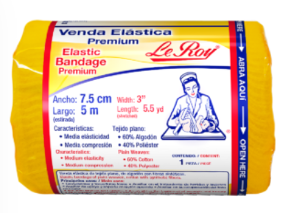The distinctiveness acquired through use allows a Trademark devoid of inherent or original distinctiveness (descriptive or generic) to prove that it has reached that quality as a consequence of its constant and notorious prior use and therefore, it is subject to registration. However, the acquired distinctiveness does not imply that the sign it protects is less distinctive than the initial one, since the secondary meaning that the latter acquired refers to a second time, meaning that it originated later, as a result of the constant use of the sign in the market and consumer recognition. This is why it is referred to as “secondary meaning“.
In our country, the figure of Secondary Meaning or Acquired Distinctiveness was introduced in the 2018 Amendment to the now repealed Intellectual Property Law and was retained in the Federal Intellectual Property Protection Law (LFPPI, for its Spanish acronym) that entered into force on November 5, 2020. However, this legal figure was already protected through various International Treaties to which Mexico is a party.
The recognition of Secondary Meaning in our legislation represents a big step forward for the Intellectual Property system as it provides further tools to promote a healthy market competition.
Although in our legal system the Trademark Rights are acquired through registration, Secondary Meaning makes this regime more flexible, giving value to the usage of the sign prior to registration; this establishes an important exception to certain absolute registrability impediments within the article 173 of the LFPPI.
Consequently, Trademark Registration applicants must evidence that the distinctiveness was acquired as a result of the Trademark use, in order for the sign to meet the main purpose of Trademarks. I.e., to distinguish products and services from others of the same class or kind and enable consumers to associate such sign with a specific business origin.
In this regard, Secondary Meaning also implies that the sign shall be used by a single producer or holder in the market and not by competitors. It also allows preventing a Trademark Registration from being ineffective by evidencing that it has acquired distinctiveness through intense use.
Turning our attention again to our legislation, article 173 of the LFPPI states that a descriptive, generic, usual, public domain sign, letters, digits or a sign consisting of a color considered alone, may not be registered for incurring in an absolute prohibition. However, if such a sign, originally not subject to registration, acquires distinctive capacity by virtue of its use, it may be registered. On the other hand, article 231 of the aforementioned law provides that a certificate will be issued for each trademark, which will state the fact that it was granted due to acquired distinctiveness, as applicable.
Our Law does not provide how applicants may prove that a sign has acquired distinctiveness, but it states that it will be in accordance with the Regulations of the Law. However, the LFPPI Regulations have not been issued, which gives the Authorities total discretion to assess the evidence submitted by holders for proving acquired distinctiveness.
Recently, the Mexican Intellectual Property Institute (IMPI, for its Spanish acronym) was criticized for registering the following isolated color, pertaining to Laboratorios Le Roy, S.A. de C.V., as a trademark.

The sign does not refer at all to a distinctive feature that can be associated to a specific business origin. However, it was granted to specifically protect international class 05 Bandages for Dressings.
According to the records on file with IMPI and the evidence submitted to prove the acquired distinctiveness of Pantone 116C Yellow color, Laboratorios Le Roy has used such color since 1974 in Mexico to identify its elastic bandages:

The evidence submitted to IMPI to prove the acquired distinctiveness of Pantone 116C color Yellow as a Trademark consist of a market study, physical samples of the product, advertising and registrations granted in Mexico and abroad that include the color yellow.
The granting of the Trademark Registration for the color yellow alone to identify international class 05 Bandages for Dressings is an important precedent in the Mexican Intellectual Property System; reason being is that the LFPPI absolutely prohibits the registration of isolated colors, but also provides the exception that a color alone may be registered if the applicant evidences that such color acquired distinctive capacity due to use.
Beyond the criticism of granting the Trademark Registration, it is important to consider whether the evidence submitted by Laboratorios Le Roy is actually sufficient to prove that a color alone acquired distinctiveness due to constant use in the Mexican market to identify elastic bandages, in order to be granted an exclusive right of use, preventing others from using it. This is so because it is essential to analyze whether consumers perceive the sign as a trademark that identifies products, and thus, as an indication of business origin.
In this respect, it is important to determine the ability and power to enforce the Trademark Registration of the color yellow (Pantone 116C) against third parties. The prohibition for third parties in the curative supplies, medical devices, pharmaceutical and hospital specialties, orthopedic elastic and sports protection goods industries to use the same or a confusingly similar color to identify their products may be considered unconscionable.
In fact, it is necessary to weigh the power and capacity with which the registration granted to Laboratorios Le Roy can be enforced against third parties in the same industry. The LFPPI states that the use of Registered Trademark or a similar mark that is confusingly similar and applying it to the same or similar products or services will be considered an administrative violation. Therefore, the scope of the registration granted to a color could extend to similar or related products, resulting in a very fine line to determine this, since it will not be possible to request considerable dissimilarity in the same color.
In this respect, it will have to be considered individually whether a third party using the same or a similar color intends to take advantage of the sign’s prestige and cause confusion among consumers. Otherwise, excessive protection would be afforded to the registration of a color alone as a Trademark, which constitutes an excess in the Intellectual Property System in Mexico. It will be interesting to observe the criteria that IMPI adopts in this regard, assuming that many of the criteria used in the Trademark Office sometimes vary greatly vis á vis the Intellectual Property Protection Office.
We are happy to provide any additional information you may require in connection with the above article.
Jáuregui y del Valle, SC,.
*This article is authored by Israel Ledesma Meléndez y Martha Ruth Celis Jiménez and it may reflect their personal opinions independently from the law firm they work for. Shall you intend to apply any of the debated interpretations within the article, we highly recommend to formally consult Jáuregui y Del Valle, S.C. or any other qualified tax and labor advisor.
© 2022, Jáuregui y Del Valle, S.C.(JDV), All rights reserved. This information belongs to JDV and external distribution should be authorized. Printing and sharing are allowed.




